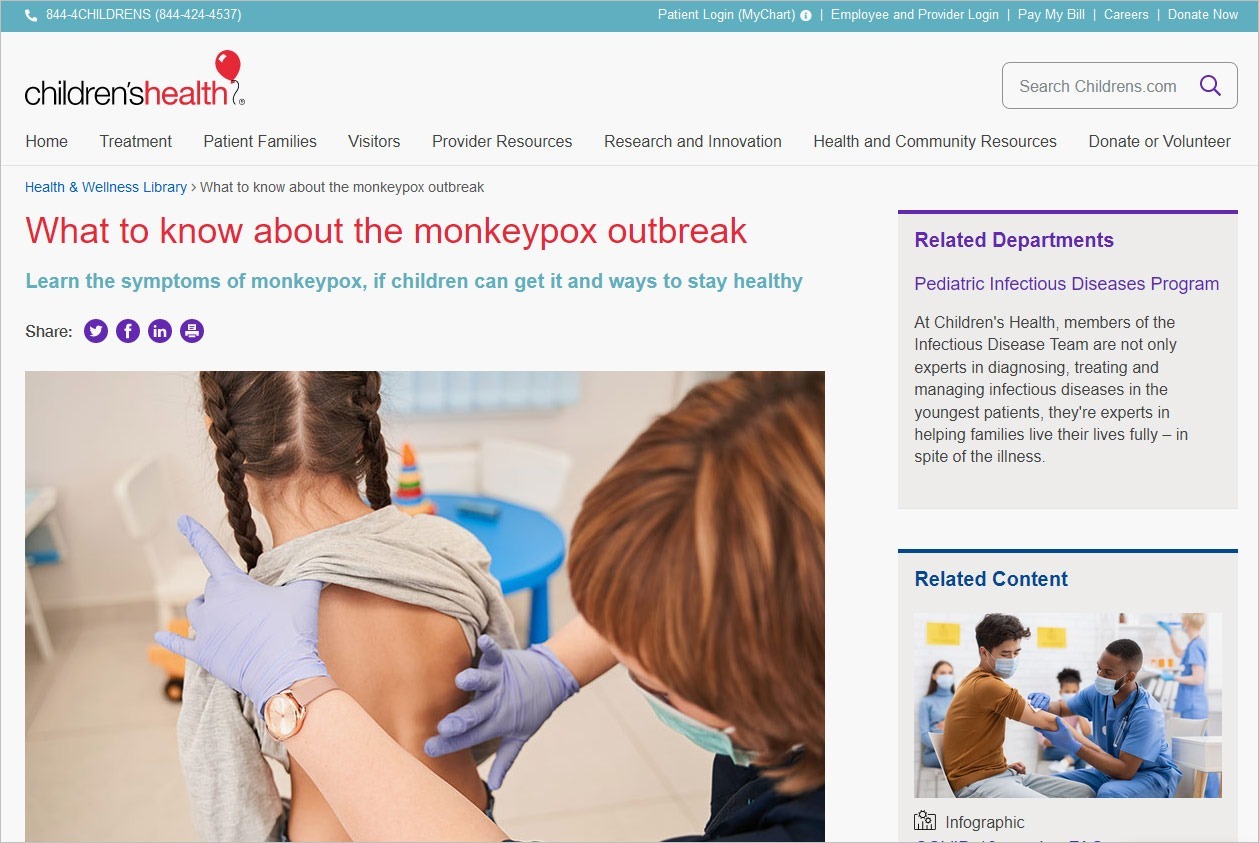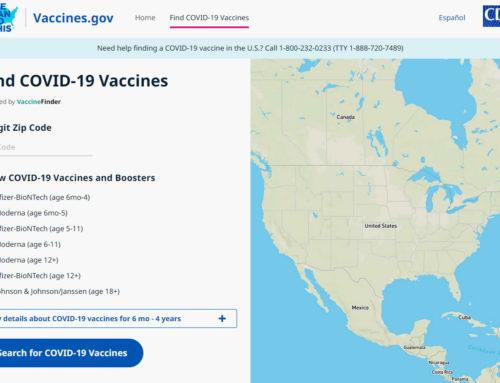Article initially published on Children’s Health (www.childrens.com) All rights reserved.
Learn the symptoms of monkeypox, if children can get it and ways to stay healthy
With news of a global monkeypox outbreak, parents may be nervous about another unusual virus spreading around the world. However, unlike the virus that causes COVID‑19, the monkeypox virus is not new. It also does not spread as easily from person to person.
“At this time in the outbreak, risk of getting monkeypox in the community is very low,” says Jeffrey Kahn, M.D., Director of Infectious Disease at Children’s Health℠ and Professor at UT Southwestern. “However, it’s good for everyone to be aware of the signs of monkeypox so they can seek medical attention if necessary and help contain the spread.”
Learn what we know about the monkeypox virus and ways to keep your family healthy.
What is monkeypox?
Monkeypox is a rare and contagious disease caused by the monkeypox virus. The monkeypox virus is from the same family of viruses as the smallpox virus, which was eradicated in 1980. However, monkeypox is not believed to spread as easily or be as fatal as smallpox.
Monkeypox was first discovered in 1958. Until recently, the majority of known cases were reported in African countries. The only prior outbreak in the U.S. was in 2003, when there were 47 cases in six states. As of July 2022, the Centers for Disease Control and Prevention (CDC) is tracking an outbreak that includes cases in the U.S. and North Texas. Visit the CDC website for the most current information about monkeypox cases.
How do you get monkeypox?
You can get monkeypox through close physical contact with an infected person. Unlike COVID‑19, the monkeypox virus does not spread easily through respiratory droplets in the air. Instead, it spreads through direct contact with the infectious rash, scabs or body fluids, or contact with items that previously touched an infectious rash or body fluids. Pregnant people can also spread the monkeypox virus to their baby through the placenta.
Monkeypox is not considered a sexually transmitted infection (STI), though it can spread through intimate contact with someone who is infected. This is not the only way the virus can spread. Anyone can get monkeypox if they are in close contact with someone with monkeypox symptoms.
Can children get monkeypox?
While the majority of monkeypox infections are currently in male adults, children can get monkeypox. However, the risk in children is low. On July 22, 2022, the CDC confirmed cases of monkeypox in children in the U.S. that were likely a result of household transmission.
Children are at higher risk for severe disease from monkeypox than adolescents and adults. For this reason, it’s important to make sure your child is not around anyone showing symptoms of monkeypox. In addition, if you are concerned about any symptoms in your child, seek medical attention.
What are the symptoms of monkeypox?
According to the CDC, symptoms of monkeypox can include:
- Fever
- Headache
- Muscle aches and backache
- Swollen lymph nodes
- Chills
- Exhaustion
- A rash that can look like pimples or blisters, that typically lasts longer than 14 days
Some people get a rash first, followed by other symptoms. Other people only experience a rash. The rash may appear on the face, inside the mouth or on other parts of the body, including the hands, feet, chest and around the groin area.
While many pictures of monkeypox show severe rash, Dr. Kahn warns that the symptoms may not be as obvious. “Classic images of monkeypox and smallpox often show hundreds of lesions, but that’s not always the case,” says Dr. Kahn. “Sometimes it may just be a few lesions. That’s why it’s important to pay attention to any symptoms.”
Children are prone to many types of common childhood rashes, such as diaper rash, eczema and hand, foot and mouth disease. If you are concerned about any unusual symptoms or rashes on your child, contact your pediatrician. While risk of monkeypox is low in children, it’s important to seek treatment as soon as possible if a child does get monkeypox.
When should I consider testing my child for monkeypox?
According to the American Academy of Pediatrics (AAP), a child should be tested for monkeypox if they have a suspicious rash. Testing is especially important if there was a close, personal contact with someone with a confirmed or probable case of monkeypox or travel that could have put them at risk.
How can you prevent monkeypox?
The best way to prevent monkeypox is by avoiding close, skin-to-skin contact with anyone who has a rash that may be monkeypox. This includes avoiding contact with bedding, towels or clothing of someone who has symptoms.
“Most children who get monkeypox will likely get it from a household contact,” says Dr. Kahn. “Do not have your child in close contact with family members or friends who have any signs of monkeypox, such as unusual skin rashes.”
In addition, proper hand hygiene remains an important way to reduce risk of illness.
There is a vaccine available to prevent monkeypox. However, at this time, vaccination is recommended only for people who have been exposed to monkeypox or who are at high risk for being exposed.
While no one wants another infectious disease spreading, parents may take comfort in the fact that so far, this outbreak does not appear to be widely affecting children. Be aware of symptoms, take precautions and pay attention to trusted resources for updates.
Article initially published on Children’s Health (www.childrens.com) All rights reserved.



